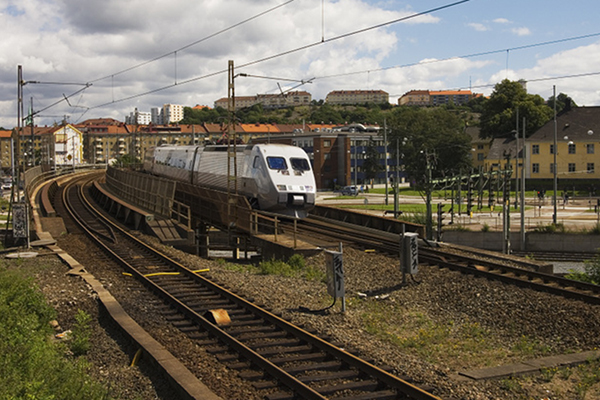In 2019, the Department Board decided to set a target of cutting emissions from air travel in half by 2024. Between 2016 and 2019, the Department of Peace and Conflict Research reduced its air travel bookings by 43 percent. This can be seen in an initial reconciliation of the environmental work. It has been a long process, where they discussed various ways of reducing their carbon dioxide emissions, but it has paid off.
“Now there are many at the University who are contacting us because they want inspiration so they can do something similar,” explains Kristine Höglund, Professor at the Department of Peace and Conflict Research and one of the initiators of the project.
“We know that our department is one of the worst sinners, and we will not be able to take things all the way down to zero,” says Isak Svensson, Professor at the Department of Peace and Conflict Research. “As researchers in peace and conflict studies, our most important contribution is to be good researchers and contribute to a more peaceful world. Armed conflicts are a big problem, including from a climate perspective. But it is possible to be more thoughtful and adapt operations without compromising too much on quality.”
A living discussion
By starting from positive behavioural changes, constantly discussing how they can be changed, and having the target of cutting air travel-related emissions in half by 2024 as a common goal, a dramatic change could already be seen the very same year they adopted their ambitious environmental policy.
“Many of the effects we are seeing in the compilation are based on the conversations we had within the department before deciding on our environmental policy”, says Isak Svensson.
The Department of Peace and Conflict Research has chosen to have a collective goal, encourage each other, and spread good examples instead of focusing on when something bad happens. Examples of concrete measures include being tougher when prioritising which conferences to go to, or prioritising conferences in Europe that can be reached by train. However, they are both careful to emphasise that it is not a matter of focusing on the amount of emissions and air travel at the individual level.
“This is centred around volunteer efforts based on each individual’s own circumstances,” says Kristine Höglund.
“This does not mean that we isolate ourselves in our chamber and stop researching,” says Isak Svensson. “You might cut out a conference or two, or travel to a regional conference and replace the trip down to Europe by train. While air travel has decreased and the workforce has increased, there has been an increase in both the number of publications and external funding.”
Networking digitally is difficult
The goal of cutting emissions in half between 2016 and 2024 is set to enable the department to adapt to the Paris Agreement, the global climate agreement that entered force in 2016 with the aim of limiting global warming by reducing greenhouse gas emissions.
Naturally, all forms of travel have decreased even more radically during the pandemic and after the time period covered by the above figures. The pandemic has thus served as a kind of experiment to see how different additional measures work in practice. Many physical meetings can be replaced with various forms of digital solutions, but physical meetings are important for making contacts and building networks.
“Networking digitally has proven to be difficult,” says Kristine Höglund. “The international networks are a major part of the research environment, and something we need for the academic debate and the quality of research. When you go to a conference, you enter a bubble and take advantage of opportunities to establish all kinds of contacts. When you sit at home in front of the computer, it is not as obvious how to go about things. But we are constantly learning. It may be possible to develop new and better methods for networking.”
